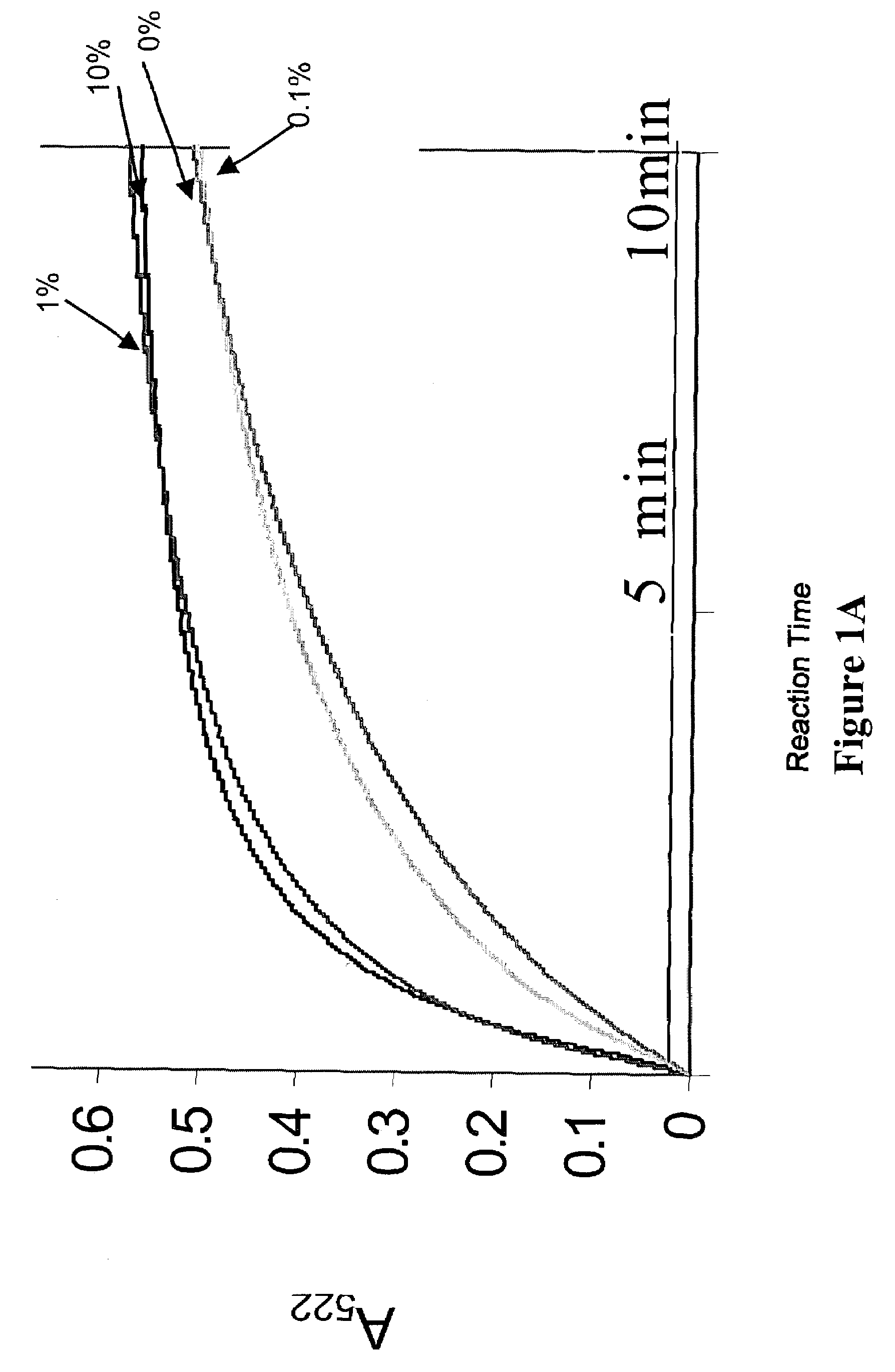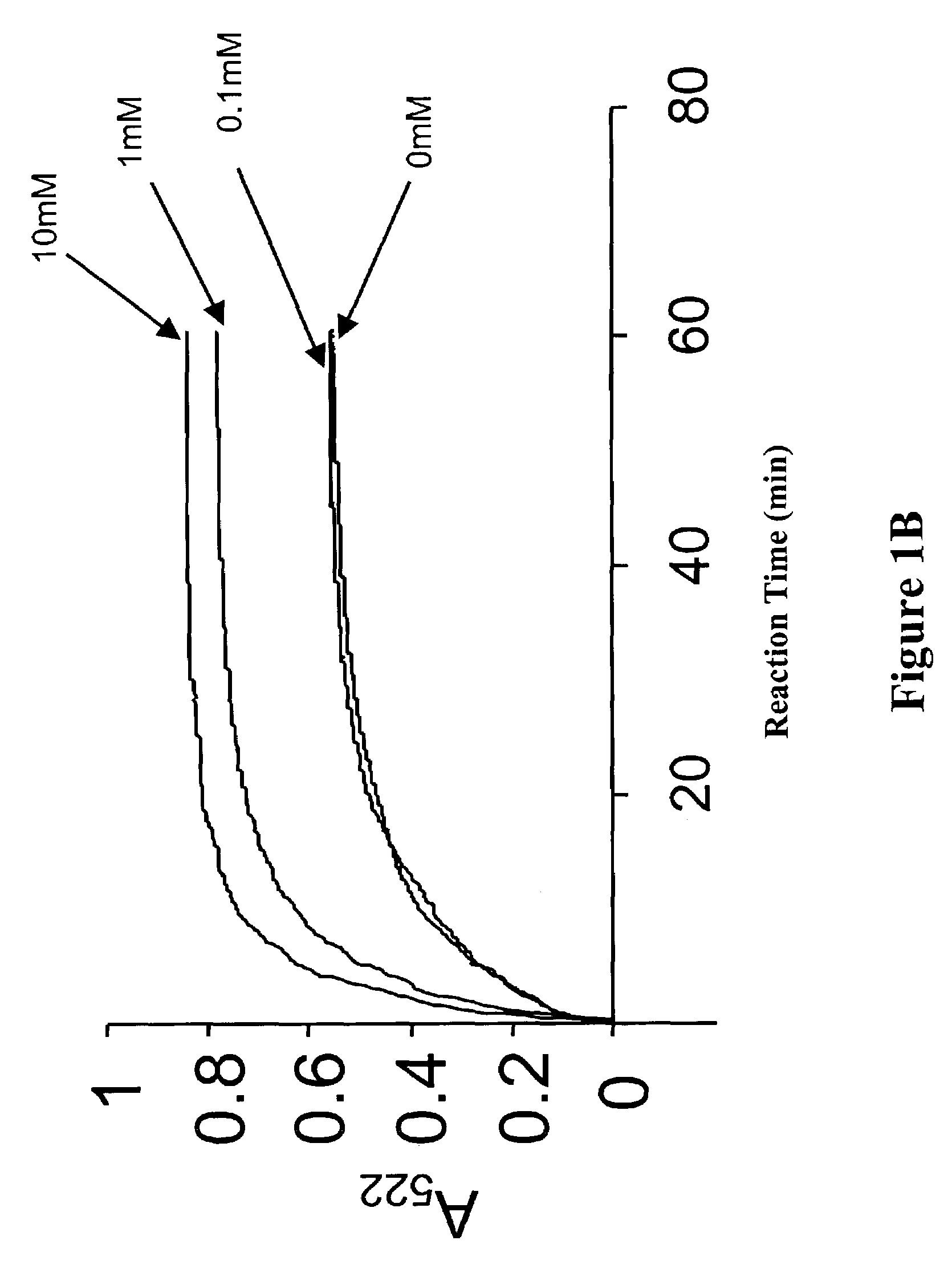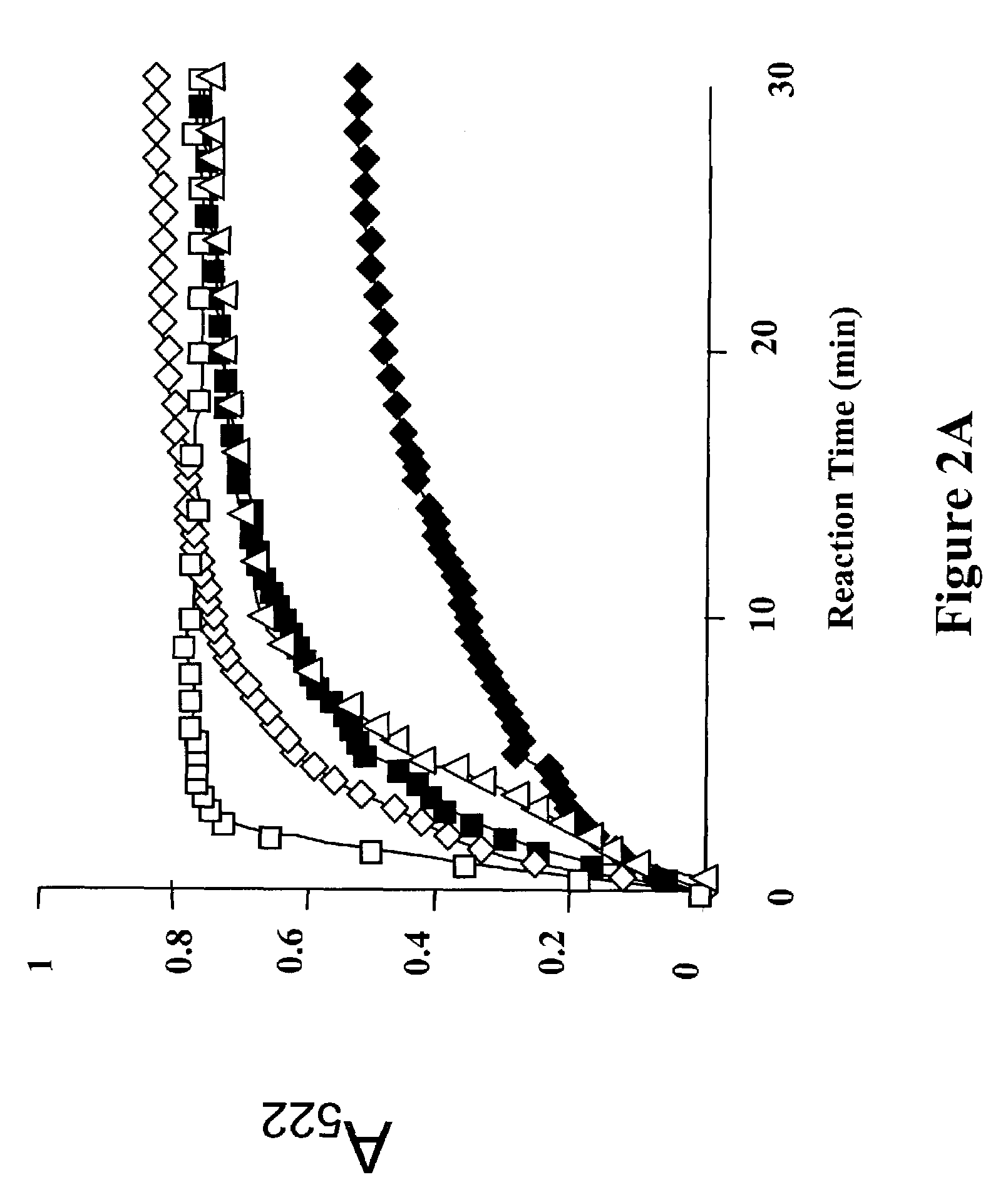Enhancement of iron chelation therapy
- Summary
- Abstract
- Description
- Claims
- Application Information
AI Technical Summary
Benefits of technology
Problems solved by technology
Method used
Image
Examples
example 1
Analysis of Enhanced Iron Release Effected by Low Concentrations of Triton-X-100, Urea, or Guanidine
[0099]The global structure of ferritin has been shown to be stable to 6 M urea at neutral pH (Lavoie, D. J., Marcus, D. M., Otsuka, S., Listowsky, I. (1979) Biochim. Biophys. Acta 579, 359–366)(Otsuka, S., Listowsky, I., Niitsu, Y., Urushizaki, I. (1980) J. Biol. Chem. 255, 6234–6237) and temperatures to 85° C. (Stefanini, S., Cavallo, S., Wang, C. Q., Tataseo, P., Vecchini, P., Giartosio, A. & Chiancone, E. (1996) Arch Biochem Biophys 325, 58–64). Here we demonstrate the use of lower concentrations of protein unfolding agents, for example, 1.0 mM to 1 M urea or guanidine to “open” the ferritin pores as assessed by enhanced rates of Fe chelation. In addition, the conditions caused a 10° C. downshift of a helix / coil transition to 43° C. These methods for opening the ferritin pores can be used in the assays described herein for identification of agents useful for altering rates of iron ...
example 2
Effect of Protein Unfolding Agents on Cell Viability as Determined by Trypan Blue Exclusion Test
[0115]HeLa cells, cultured in DMEM medium with 10% FBS, were incubated with the protein unfolding agents for 24 hours at 37° C. in 12-well plates. Cells were treated with trypsin, fresh medium was added and the cells were suspended in the fresh DMEM medium with 10% FBS. Cell suspensions were mixed 1:4 with trypan blue in 0.85% NaCl (weight / volume), incubated 5 minutes at room temperature, then examined by light microscopy in a hemocytometer chamber. Blue cells are scored as non-viable. For each condition, 1–3 analyses were performed.
[0116]The results are shown in Table 2. No significant difference in cell viability was detected between cells incubated in normal medium and those treated with the indicated concentrations of urea or guanidine. Low concentrations of these two protein unfolding agents do not affect cell viability. The differences between treated and control cells do not appear...
example 3
SDM Changes that Enhance Mineral Dissolution do not Affect Global Structure.
[0118]Ferritin is very heat stable. In fact, heating is used to denature contaminating proteins during ferritin isolation from animal tissues (Theil, E. C. (2001) Ferritin (John Wiley & Sons, Chichester)). The major heat-induced disruption in ferritin structure occurs between 80° C. and 90° C., depending on the protein source (Stefanini, S., Cavallo, S., Wang, C. Q., Tataseo, P., Vecchini, P., Giartosio, A. & Chiancone, E. (1996) Arch Biochem Biophys 325, 58–64). To determine if the global temperature stability of ferritin is altered by changes that enhance mineral dissolution, the effect of SDM on global structure was measured as assayed by changes in UV absorbance.
[0119]Global ferritin unfolding of wild-type ferritin and four mutants (H-R72D, D122R, H-L134P, and H-L134V) was monitored as changes in UV-vis absorbance at 280 nm, recorded on a Cary 100 Bio UV-vis spectrophotometer (Varian) over the temperatur...
PUM
| Property | Measurement | Unit |
|---|---|---|
| Fraction | aaaaa | aaaaa |
| Molar density | aaaaa | aaaaa |
| Time | aaaaa | aaaaa |
Abstract
Description
Claims
Application Information
 Login to View More
Login to View More - R&D
- Intellectual Property
- Life Sciences
- Materials
- Tech Scout
- Unparalleled Data Quality
- Higher Quality Content
- 60% Fewer Hallucinations
Browse by: Latest US Patents, China's latest patents, Technical Efficacy Thesaurus, Application Domain, Technology Topic, Popular Technical Reports.
© 2025 PatSnap. All rights reserved.Legal|Privacy policy|Modern Slavery Act Transparency Statement|Sitemap|About US| Contact US: help@patsnap.com



